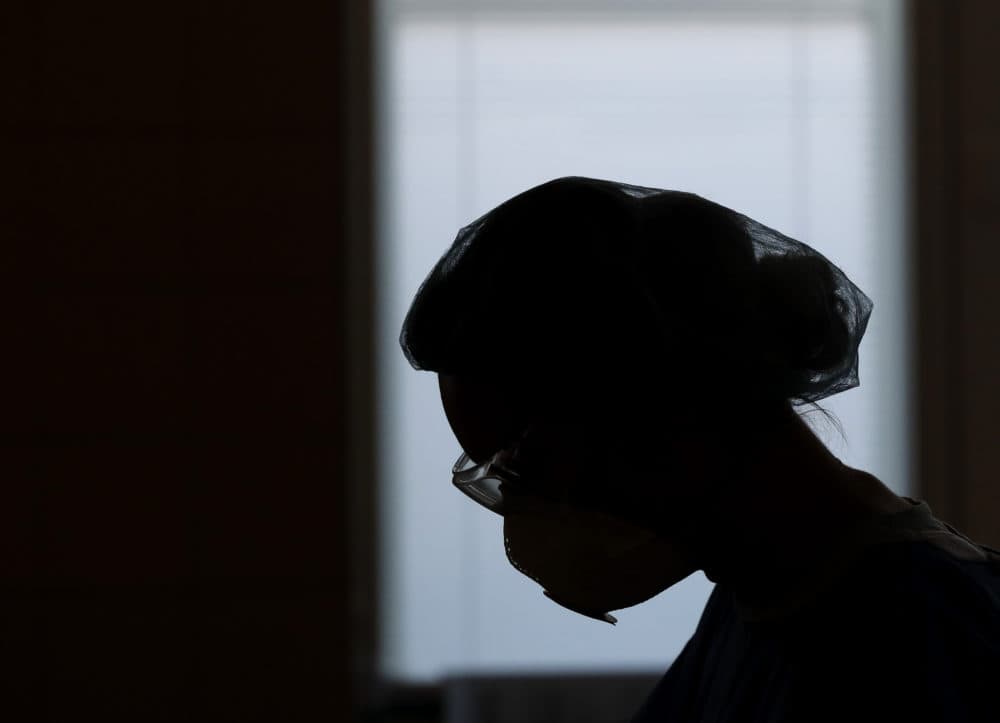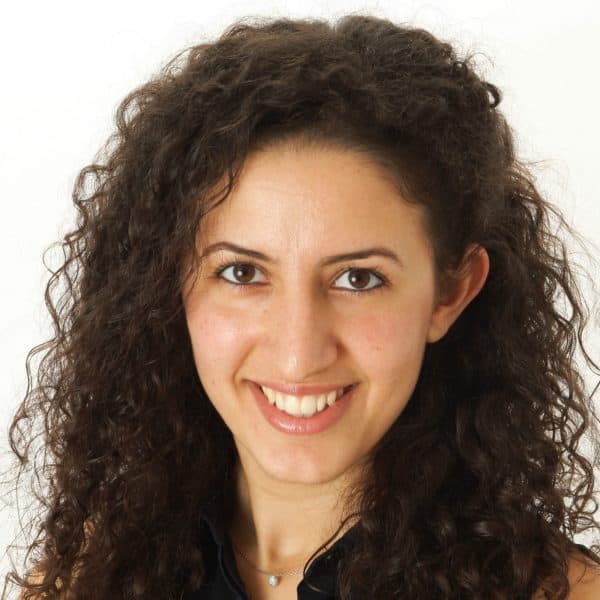Advertisement
commentary
Anxiety, Fear and Uncertainty: What It's Like To Treat COVID-19 Patients

“I think he needs to be intubated now,” I told my supervising doctor in the ICU. We peeked through the window within the door of our patient’s hospital room. The elderly man with COVID-19 lay slumped in the hospital bed, his eyes closed out of overwhelming fatigue. Even with six liters of oxygen, he still struggled to breathe.
We deliberated, for what felt like hours, about whether to place him on a breathing machine.
I pointed out that at our other hospital campus, COVID-19 patients on this much oxygen were automatically intubated. My supervising doctor countered that our patient would likely never come off the machine. Early studies from China have shown that the majority of intubated COVID-19 patients eventually die in the hospital.
She instructed a nurse to prop him up in bed and asked that we re-evaluate him later in the day. So I did for our patient the only thing I could at that point: watch and nervously wait.
Most of medicine is a playbook. We have diseases, and we have instructions on how to treat them. But what happens with a new deadly virus, when there are no rules of play?
Anxiety. Fear. Uncertainty.
Most of medicine is a playbook ... But what happens with a new deadly virus, when there are no rules of play?
Uncertainty in the treatment options for COVID-19 patients underlies a lot of the stress that physicians are feeling right now. Our rules of play for other diseases come from randomized, controlled clinical trials that typically involve hundreds, if not thousands, of patients. These are the very types of rules that have been asked for by Dr. Anthony Fauci, director of the National Institute of Allergy and Infectious Diseases.
In a Coronavirus Task Force press briefing on March 25, he emphasized the need for “randomized controlled trials of drugs, so that we will have a menu of drugs that we have shown to be effective and shown to be safe.”
But the current data for antivirals and other advanced COVID-19 therapies come from small, retrospective studies that are not the gold standard of evidence in medicine.
Hydroxychloroquine, a drug used to treat malaria, is now being repurposed for COVID-19. “Hydroxychloroquine — I don’t know, it’s looking like it’s having some good results,” said President Trump at a press briefing on April 3. But the evidence for its efficacy comes from a French study of only 36 patients.
Advertisement
Larger, more rigorous clinical trials are needed.
In a time of uncertainty in medical decision-making, we as physicians have no option but to rely on these types of limited data and the expert advice of our colleagues around the world who have more experience in taking care of COVID-19 patients. We create certainty — to the best of our abilities. It’s something we’re taught always exists as early as in medical school with multiple choice questions on board exams, to which there is always a right answer: A, B, C or D.
To acknowledge uncertainty can be unsettling. It feels like regressing to a time before evidence-based medicine. Dr. William Osler, a venerated physician, once said, “Medicine is an art of uncertainty.” That was in the 1800s.
But looking back through history, uncertainty consistently has served as the catalyst for developing novel therapies. At a time when surgeries were frequently complicated by infections for unknown reasons, Dr. Joseph Lister began applying carbolic acid to the surgical wounds of his patients. He found that it decreased the need for amputations. This practice was first published in The Lancet in 1867 and eventually led to the modern antiseptic technique that is now used routinely in surgery.
Similarly, the drug AZT was initially tested for cancer in the 1960s but repurposed later for AIDS, when treatment was desperately needed and the cause of death not fully understood. By 1987, following a successful clinical trial, AZT was approved by the FDA as the first HIV-targeting drug.
The distress of uncertainty should be tempered by the understanding that, in due time and with carefully conducted clinical trials, uncertainty will lead to effective treatment options.
Slowly but surely, our playbook for COVID-19 is getting written. Every day at Yale New Haven Hospital, where I work, a group of doctors from different specialties — infectious disease, hematology, rheumatology, immunology — come together to update a treatment algorithm for COVID-19 based on the latest evidence. This algorithm then gets disseminated throughout the hospital system and posted to social media for other institutions to consider using.
So in the moment, how did we deal with the uncertainty for our patient? He was ineligible for hydroxychloroquine because of a heart condition, and intubation seemed futile. Our options were limited.
But looking back through history, uncertainty consistently has served as the catalyst for developing novel therapies.
We solicited the advice of expert colleagues, who recommended a trial of steroids. Even though steroids have not been tested for COVID-19 in a randomized controlled trial, there is some data that they might decrease rates of oxygen requirement and death. Less than a week later, our patient left the ICU, on barely any oxygen. We were fortunate. In his case, uncertainty led to a favorable outcome.
Perhaps among the lessons to be learned from COVID-19 is how to confront discomfort with uncertainty. This is particularly true for medical providers. In a New England Journal of Medicine perspective piece, Dr. Arabella Simpkin and Dr. Richard Schwartzstein of Harvard Medical School write, “Doctors often fear that by expressing uncertainty, they will project ignorance to patients and colleagues, so they internalize and mask it.”
COVID-19 is an opportunity to dissolve that fear of uncertainty. A first step is to acknowledge that uncertainty exists. By speaking about uncertainty, we can normalize it. Uncertainty does not mean inaction. It means that there is a challenge before us that collectively, as physicians and as a global community, we will rise up to tackle. Uncertainty in medicine begs for the patience of the general public and a ruthless persistence for those who practice it.
We need to let go of our prescriptive habits and embrace uncertainty about COVID-19, because, if nothing else, it promises hope for us to get more quickly onto the other side of this curve.
